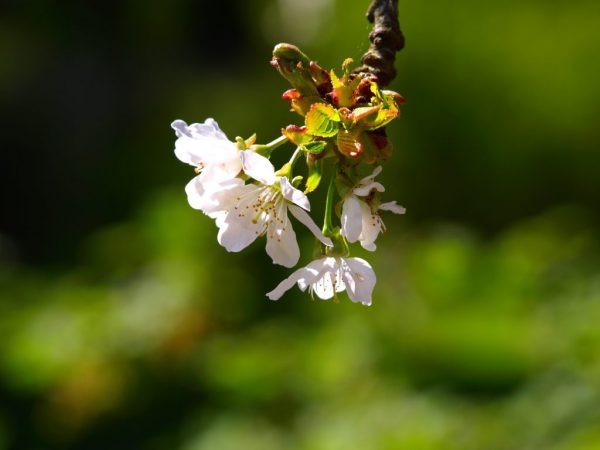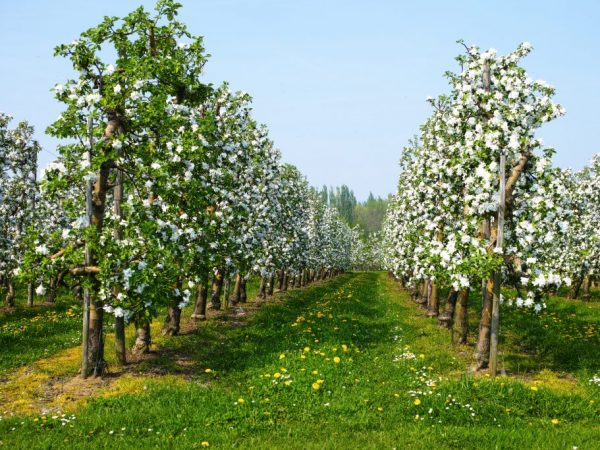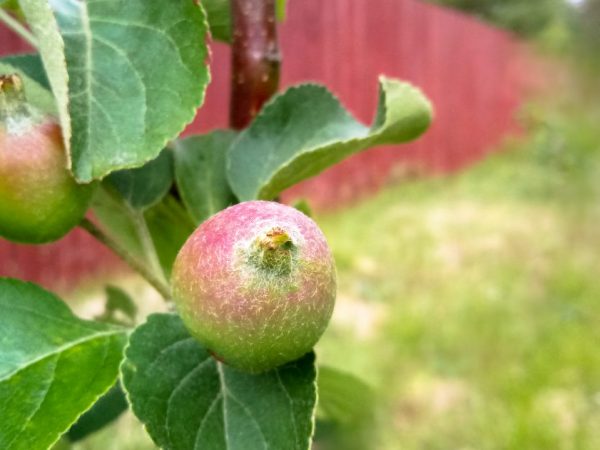Growing an apple tree Candy
Experienced gardeners have their favorites, such is the Candy summer apple tree. It appeared as a result of the fruitful work of S.I. Isaev when crossing the varieties Korobovka and Papirovka.
- Advantages and disadvantages
- Characteristics of the variety
- Taste
- Yield
- Pollinators and self-fertility
- Frost resistance
- Growing regions
- Landing
- Timing
- Sapling selection
- Landing technology
- Care
- Watering
- Top dressing
- Pruning and shaping the crown
- Protection from pests and diseases
- Features of ripening and fruiting
- Harvesting and storage
- Subspecies
- Ranet Candy
- Candy summer
- Candy-2
- Gardeners reviews

Growing an apple tree Candy
Advantages and disadvantages
Like any other tree, the apple tree of this variety has its pluses, which are much more than minuses. Thanks to this, gardeners opt for it.
Description of the benefits of culture:
- the apple tree is resistant to most diseases due to its strong immunity;
- rich sweet taste of fruits;
- easily tolerates winter;
- young apple trees begin to bear fruit early and are able to please the gardener with a large harvest;
- The tree easily tolerates severe winters and quickly wakes up with the arrival of spring.
The disadvantages are the short storage period of the crop (up to a month) and the need to maintain a large distance between trees during cultivation due to the rapid growth of the crown.
Characteristics of the variety
The tree is columnar in structure, of medium height, the crown is spherical, dense. There is a tendency to thickening, which creates problems in leaving.
A garden of trees of this variety is planned so that there is a large distance between rows, which is not always possible. This creates difficulties, and because of this feature, this variety is not grown on an industrial scale. But on home gardens, he is the favorite.
In the first 3 years, the tree forms the main trunk height to a level of about 2.7-3.5 m, then growth is less intense, and on average the apple tree does not exceed 5 m.
The exception is apple trees on dwarf rootstocks: their height is a maximum of 1.7 m. There is a definite advantage in this - already by 2 years such trees, with the presence of a pollinator, begin to produce crops.
The variety of Candy apples does not differ in large sizes, but the fruits are endowed with high taste and useful properties. In their composition, they contain a large amount of vitamin C, iron.
The apples are yellow with red stripes. The weight of one can be from 80 to 100 g, sometimes up to 150 g. Caloric content - an average of 47 kcal.
Taste
After ripening, the apples are sweet, juicy, with a caramel note, have a delicate pulp structure, but at the same time not crumbly. Only overripe fruits are endowed with this quality.
Yield
Apple-tree varieties Candy bears fruit in summer. The harvesting stage falls on the period from the 3rd decade of July to the 2nd decade of August. From one apple tree, you can collect from 50 to 100 kg of fruits.
Pollinators and self-fertility

Choose the right pollinators for your tree
This tree needs pollinators because self-fertility is not characteristic of him.Apple trees, which bloom during the same period, do an excellent job with this role. The best of them are Malt Bagaevsky, John Grimes, Red early, Melba, Zolotaya Kitayka, Stark, Papirovka, Bellefleur-Kitaika.
Frost resistance
The apple tree easily tolerates winter. Even if negative temperatures have damaged the tree, it can quickly recover and please with abundant flowering in the spring.
Growing regions
The variety is widespread in areas with a temperate continental climate. The main plantings are concentrated in the Russian Federation (the variety is often grown in the Moscow region and due to its high frost resistance even in some northern regions), Belarus, Ukraine.
Landing
How easily the tree will take root, as well as its further development and growth, depends on compliance with the planting technology and the quality of the seedling purchased in the nursery.
Timing
The most favorable for growing Candy apple trees is the period after the transition of the culture to the dormant stage. This can be done both in autumn, when the foliage is already crumbling and the temperature drops below 10 ° C, and in spring, after the soil thaws, but before the sap begins to move.
Sapling selection
When buying seedlings, you should carefully examine them. They should be free from traces of insects and infections. The tree must be labeled with the variety, producer and growing area.
The root system of the seedling must be well developed and the main root must be traced. For transportation, the roots should be moistened and placed in a plastic bag. It is recommended to purchase planting material for 1-2 years.
Landing technology
The speed of adaptation of the tree depends on the observance of the planting rules and the correct choice of the site.
The choice of location should be taken responsibly. The best solution would be an area where moisture does not collect and groundwater is no higher than 7 m from the surface.
The depth of the pit is 60 cm, the diameter is 80 cm. Before planting, the soil is prepared and fertilized. For this purpose, organic fertilizing (compost, chicken droppings) and mineral (superphosphate and potassium sulfate) are used. The resulting composition is laid out at the bottom of the pit so that the roots are in this mixture.
The neck of the root is not buried in the ground, it should protrude 4-7 cm above the ground and the site of inoculation.
In the future, seedlings need abundant watering for rooting.
It is necessary to provide the apple tree with protection from insects and rodents. You can use cloth to wrap around the barrel.
Care

Apple trees need mandatory fertilization
Timely measures for pest control, feeding and watering can increase the immunity of the Candy apple variety and increase its yield.
Watering
To provide the tree with moisture, watering is carried out in such a volume - 2.5 buckets of water are consumed per tree. This will help it take root faster and create freeze protection.
In warm autumn weather, watering is carried out 2 times a week, using at least 10 liters of water per apple tree. To preserve moisture in the soil, mulch the trunk circle with compost.
Top dressing
To maintain the active development of the tree, fertilizing is carried out with organic fertilizers (chicken droppings, humus, sapropel, compost) or mineral fertilizers (in most cases, superphosphate fertilizers are used).
Organic matter is applied in the amount of 5-6 buckets, evenly distributing this amount around the tree and loosening it a little, mixed with the top layer of soil over the entire surface of the zone under the crown.
Summer feeding is carried out when the fruits are ripening. Complex preparations are used for it (sodium humate and nitrophoska, 350 g for each tree).
Mineral fertilizers, such as superphosphate and potassium, are used in a 1: 1 ratio in the fall at the rate of 40-60 g per 1 sq. m, covering the trunk circle with them.
It is advisable to dig up the soil periodically. This is done in order to saturate the roots with oxygen and destroy the crust on the surface.It is recommended to dig before cold weather, because under the weight of snow, the soil is compacted.
Pruning and shaping the crown
At different periods of development and regardless of the reasons that cause it, the tree constantly needs pruning. It has such a positive effect:
- the crown, in which the shoots growing inward have been removed, is better illuminated by the sun and is less susceptible to disease;
- the number of ovaries decreases in varieties prone to excessive fruiting, and the grown crop does not shrink;
- in trees, the fruits of which are formed on the shoots of the first year, on the contrary, it stimulates a greater number of set apples;
- promotes a beautiful and healthy look of the apple tree without diseased and dried twigs;
- there is an extension of the period of active fruiting after rejuvenating pruning;
- fruits in the process of development receive the maximum amount of nutrients, because all tops are removed.
It is important to remember that pruning is done only with sharp tools, after which the cut points are processed with garden varnish.
It is necessary to remove branches growing at an acute angle, into the crown, intertwining or cracked.
It is optimal to prune the Candy apple tree in early spring before the start of sap flow. It is also permissible to do this in the period after the foliage has fallen. It should be remembered that autumn pruning should not be as strong as spring pruning. in the harsh winter period, the risk of kidney freezing is high.
Protection from pests and diseases
The variety is immune to all diseases except scab. To prevent the occurrence of infection, careful care and timely spraying are required. To do this, use a solution of Bordeaux liquid or copper oxychloride (a description of the preparation of the solution is in the instructions that are dispensed with the drug).
Before opening the buds, the tree is treated with a 3% solution, after flowering, the procedure is repeated using a weaker (1%) solution.

Good care will keep trees healthy
For prevention and treatment, drugs are used that fight the source of infection in a complex way - both outside and inside the tree. These include:
- "Speed" - 4 ml per 20 liters of water, used 2 times: before and after flowering with an interval of 2 weeks;
- "Rajok" - 3-4 ml per 20 liters of water, sprayed up to 4 times per season: before bud break, during bud opening and 2 times after flowering with a break between procedures for 2 weeks.
In early spring, before the start of active growth of apple trees, to protect against insects that damage the leaves, use "Oleocobrite" (800 g per 20 liters of water). It eliminates insects hibernating in the buds of the tree.
The main enemies of ripe fruits are wasps, which eat the flesh from the inside. Distract pests with a bottle of water to which fructose or kvass is added. The main thing is not to use a substance that attracts bees, so as not to cause their unnecessary death.
Features of ripening and fruiting
Young summer apple trees Candy delight the gardeners who grow them with a harvest starting from 4 years old. If the trees are on a dwarf rootstock, then wait for the result 2 years earlier.
Harvesting and storage
Apples ripen in stages. It is recommended to pluck the fruit with the stalk. It is not advisable to shake apples off the branches, then they lose their quality and quickly deteriorate.
When laying for storage, you should be careful: the more complete the wax coating, the higher the chance that the fruits will be stored for a long time. The timing of this varies from 3 to 7 weeks, depending on the temperature of the place where they are stored.
Subspecies
On sale, this variety is often found on a dwarf rootstock. You can hear about other varieties of this variety, but not all of them exist.
Ranet Candy
It is impossible to characterize this subspecies, since this is a marketing ploy of merchants. Pomology does not contain a description of this variety.
Candy summer
This is a delusion, this kind does not exist. This is the name for apples that ripen before August 19.
Candy-2
Candy-2 is a clone of the variety with improved characteristics. The fruits are more transportable and the crown of the tree is more compact.
Gardeners reviews
Gardeners, who once tasted the fruits of the summer Candy apple tree, describe their sweetness and delicate delicate aroma. Their taste is sometimes described as caramel. The advantage of culture is that the fruits are firmly attached to the branch and do not crumble, and in the springtime compact and beautiful trees are a decoration of the garden.
Apple trees do not need a lot of sunlight, they are unpretentious to growing conditions. To obtain liquid, juicy fruits, abundant watering is required. Because the shelf life of the fruits is not long, many note that they make preparations worthy of taste for the winter.

